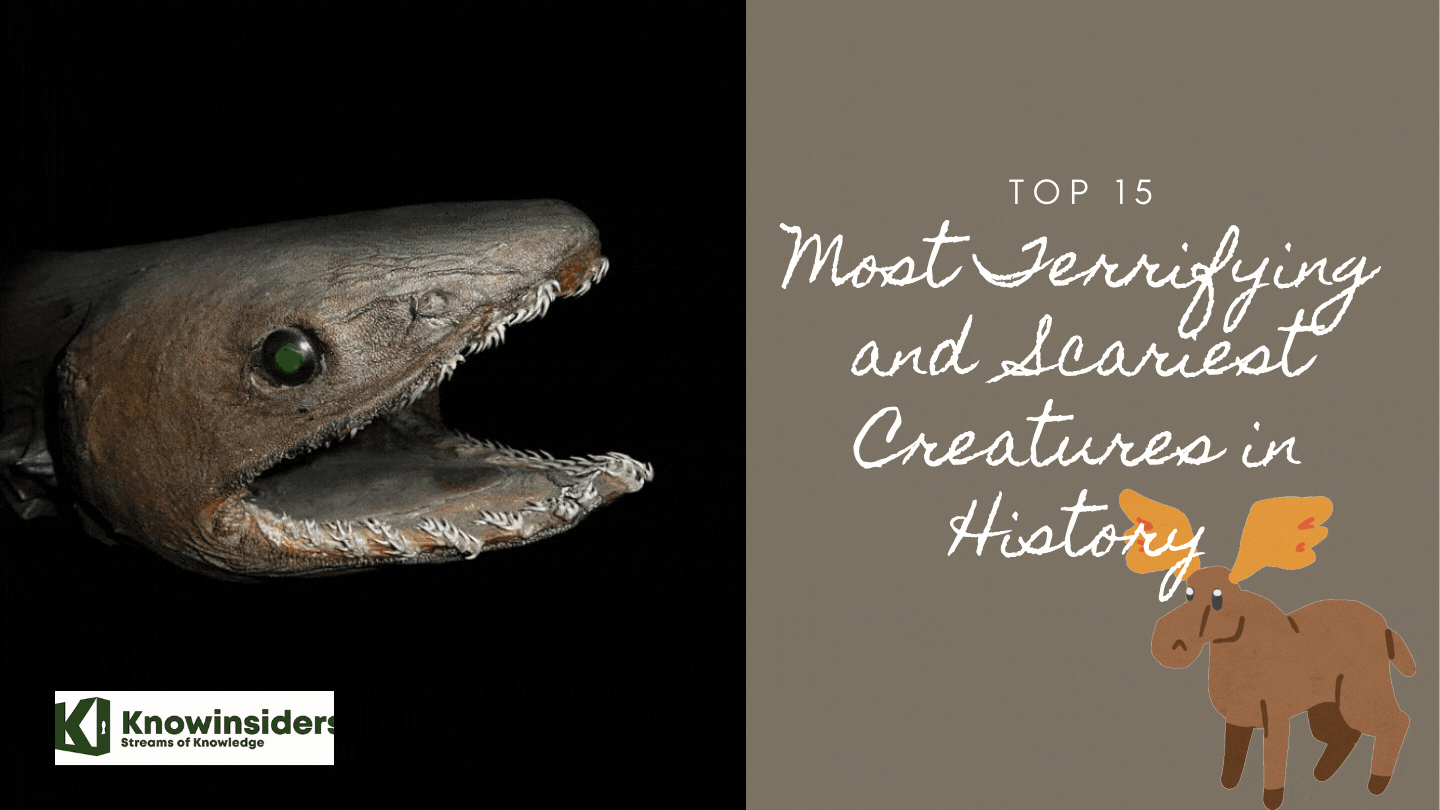Top 10 Scariest Science Experiments In The World History
 |
| Scariest Science Experiments In The World History - Photo KnowInsiders |
| Contents |
Check out Top 10 Scariest Science Experiments In The World:
1. Mind Control
The CIA started a top-secret program named MKULTRA in the 1950s to hunt for substances and other methods to employ for mind control. In an effort to perfect brainwashing during the following two decades, the agency tried hallucinogens, sleep deprivation, and electrical shock methods.
More than 149 research studies were carried out by CIA scientists as part of MKULTRA. In one experiment, they gave unknowing bar goers in New York and San Francisco LSD to assess the drug's social impact. In other cases, they offered heroin to heroin users to induce them to take the psychedelic.
Spooked by the Watergate scandal, in 1973 CIA Director Richard Helms ordered documents related to the project destroyed. However, some documents escaped destruction, and by 1977 a Freedom of Information Act request released more than 20,000 pages on the sordid program to author John Marks.
2. Japan’s lethal experiments on Chinese civilians in the 1930s and 40s
The reality of Japanese Imperial Army Unit 731 was covertly erased for years following World War II among the majority of what was regarded as the "civilized" world. The truth was repressed. Questioning of memories. deny the reports.
Even now, only historians and academics are aware of the full scope of Unit 731's wartime activities, which included horrifying, lethal medical experiments and lethal biological weapons testing on innocent Chinese civilians.
But for those who are interested, the information is available. Additionally, for individuals who want to use them for their own individual purposes.
| The truth is that Japan's Unit 731 committed some of the most heinous war crimes ever. Thousands of prisoners were killed in cruel human experiments at Unit 731, which was based near the northeastern China city of Harbin, north of the Korean peninsula and on a border with Russia. Perhaps hundreds of thousands more — maybe as many as a half-million — were killed when the Japanese tested their biological weapons on Chinese civilians. The exact number of dead is not known. It may never be known. |
3. Deadly Nurses
While the CIA was working so hard to control people's minds, it turns out it's pretty easy to get people to do what you say: All you have to do is ask like you mean it.
In 1963, social psychologist Stanley Milgram had shown that Yale University students were willing to administer a deadly shock to strangers if an authority figure requested it.
But psychiatrist Charles Hofling wanted to see how obedience influenced decisions when people didn't know they were part of an experiment. In his innocuously titled 1966 paper "An Experimental Study of Nurse-Physician Relationships," Hofling described a chilling experimental protocol: An unknown doctor called real nurses on the hospital's night shift and asked them to administer twice the maximum dose of an unapproved drug to a patient. Unbeknown to the nurses, the "medicine" was actually a harmless sugar pill and the doctor was a fake.
While it's frightening that the experiment was given the green light at all, it's perhaps even scarier that 21 out of 22 nurses complied. The researchers clearly labeled the drug, so nurses knew they were overdosing their patients. The nurses also violated hospital rules by taking instructions over the phone and giving an unapproved medicine. The study showed just how much the aura of authority could cloud people's ethical judgments.
READ MORE: How Old Is The Earth In Science, Bible
4. Vladimir Demikhov Made A Two-Headed Dog
 |
| Photo all that's interesting |
Vladimir Demikhov was a pioneer in transplantology before he made his two-headed dog, and he even came up with the name. Following the transplantation of several essential organs between dogs (his preferred experimental subjects), he sought to explore whether he might advance the situation: He desired to attach the head of one dog to the body of a different, completely unharmed canine.
Demikhov and his colleagues began performed this surgery 23 times beginning in 1954, with different degrees of success. Although the 24th attempt, in 1959, was not the most successful, it received the most media attention because to an article and images that appeared in LIFE Magazine. Thus, the two-headed dog that history remembers the most is this one.
Demikhov selected two patients for this surgery: a huge stray German Shepherd he named Brodyaga (Russian for "tramp") and a smaller dog he called Shavka. Shavka would provide the secondary head and neck, and Brodyaga would serve as the host dog.
This two-headed dog ultimately only had a four-day lifespan. It might have lived even longer than Demikhov's longest-living two-headed dog, which endured 29 days, had a neck vein not unintentionally become injured.
Even without considering the deaths of the canine test animals, Demikhov's experiment's moral ramifications are complex. Contrary to several of his previous achievements in the field of transplantology, this head transplantation had no practical uses. However, the consequences for the dogs were unquestionably very serious.
5. US nuclear testing on civilians between 1950 and 1969
During the 1950s, the U.S. government tested atomic bombs on in southern Nevada. They chose this area because the population of the area was not large, and only thousands of people, not millions, would be affected by radiation.
The first test bomb exploded over the Nevada desert on January 27, 1951. The fallout drifted east, into southwest Utah. The commission that oversaw testing, the Atomic Energy Commission, promised residents of southern Nevada and Utah that the testing was safe, and residents believed them. Even when livestock began dying, many of the residents didn’t question what the government was telling them.
Unfortunately, the Atomic Energy Commission lied, and they did it knowingly. Their own scientists knew that radioactive fallout could kill or harm both animals and people, but the Commission did nothing to warn residents or stop testing.
6. ‘21gram’ Experiment
 |
| Photo mcgill |
he April 1907 issue of American Medicine featured a paper by Dr. Duncan Macdougall describing his experiment whereby the beds of dying patients were placed on a sensitive balance. Believe it or not, he was trying to weigh the human soul! The paper was titled “Hypothesis Concerning Soul Substance Together with Experimental Evidence of The Existence of Such Substance.”
Macdougall of Haverhill, Massachusetts placed six dying patients on the specially constructed balance and concluded that at the moment of death there was a loss in weight of about three quarters of an ounce, or 21 grams.
He had previously determined the weight loss attributed to evaporation of moisture form the skin, and by comparison this was sudden and much larger. He even controlled for weight loss due to urine and fecal eliminations and concluded that these could not account for the change in weight. Air loss from the lungs was not the answer either, as he determined by lying on the scale himself and noting that breathing had no effect on weight. After weighing his six patients, Macdougall went to work on dogs.
How he got his hands on 15 dying dogs is not clear, but he found no weight loss at the moment they expired. He wasn’t surprised of course because he didn’t think dogs had souls. No one since has confirmed Macdougall’s findings but the movie “21 Grams” was based on this idea.
7. Scientist Lets Insect Live Inside Her
 |
| Photo science |
The chigger flea, commonly known as the sand flea, is quite repulsive. It permanently burrows into the skin of a warm-blooded host, such as a human, swelling, excreting, and laying eggs until passing away 4-6 weeks later, still lodged in the skin.
Although we have a lot of information about them, their sexual lives have remained a mystery. No longer: Sand flea development piqued the curiosity of a researcher in Madagascar, who kept one of the insects within her foot for two months. She discovered that the parasites most likely have sex while the females are already within their hosts thanks to her close observations.
READ MORE: Top 11 Scariest Haunted & Ghost Houses In Canada
8. Goats Producing Spider Silk
Goats have been given spider silk genes by scientists. Why?
The protein that creates silk is then present in the goats' milk and may be extracted in enormous quantities. Scientists are hoping to improve items like artificial limbs and bulletproof vests by using spider silk, which has a strength that can be up to five times that of steel.
9. Human Brain Cells Growing in Fetal Mice
Scientists have injected human embryonic stem cells into the brains of fetal mice still in the womb. After the mice were born, the human brain cells developed along with the mouse brain cells, proving that human stem cells can develop into human brain cells in another living animal.
Scientists believe this technology could advance research on human brain disorders and improve testing of experimental medications. Read about the 11 psychology experiments that went horribly wrong.
10. Cows Producing Milk with Human Proteins
 |
| Photo shutterstock |
The idea of a human-cow hybrid may sound like something out of science fiction, but a Dutch biotech company may be closer than you think to bringing this phenomenon to your table. The human protein lactoferrin, which is most frequently seen in human breast milk, has been genetically modified into cows so that it is present in their milk.
The protein is a good immune system booster and fights a variety of infections; the researchers intend to use this protein-rich milk to make dairy products that have similar health advantages and nutrients.
 Why the sky is blue - Watch this EXPERIMENT to Find out Yourself Why the sky is blue - Watch this EXPERIMENT to Find out Yourself In this video of EXPERIMENT, we show you why the sky is blue. |
 Top 15 Most Terrifying And Scariest Creatures in History Top 15 Most Terrifying And Scariest Creatures in History Find out the list of top most terrifying and scariest creatures that was ever found in the world. |
 Facts About the Evil Mermaid in History Facts About the Evil Mermaid in History Besides the beautiful, kind mermaids, there are many scary anecdotes about mermaids that are evil and always bring disaster. |
























